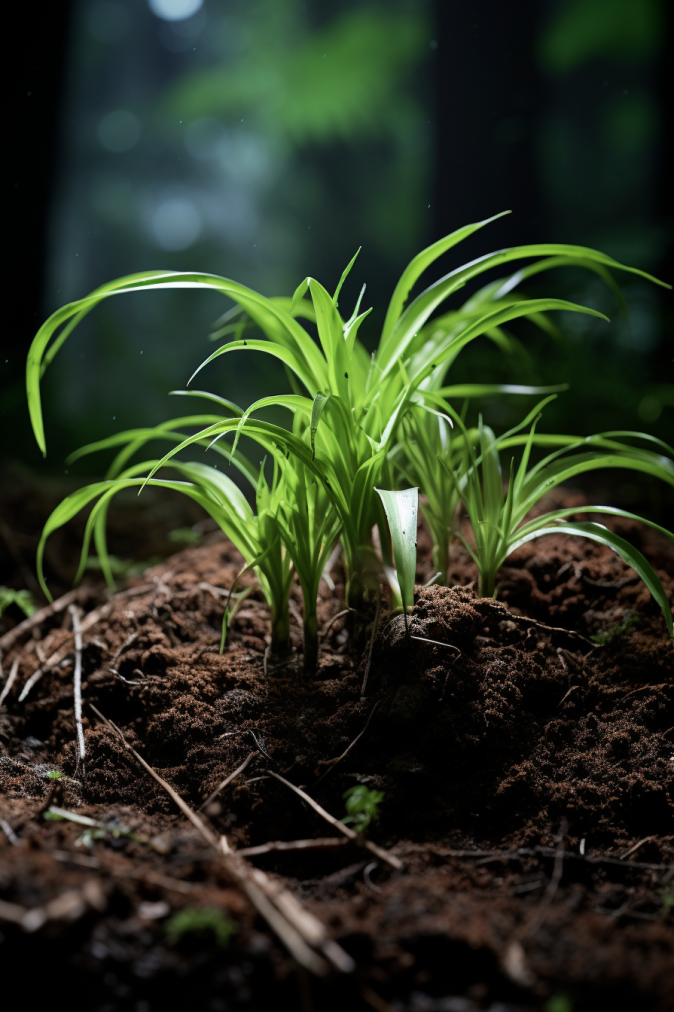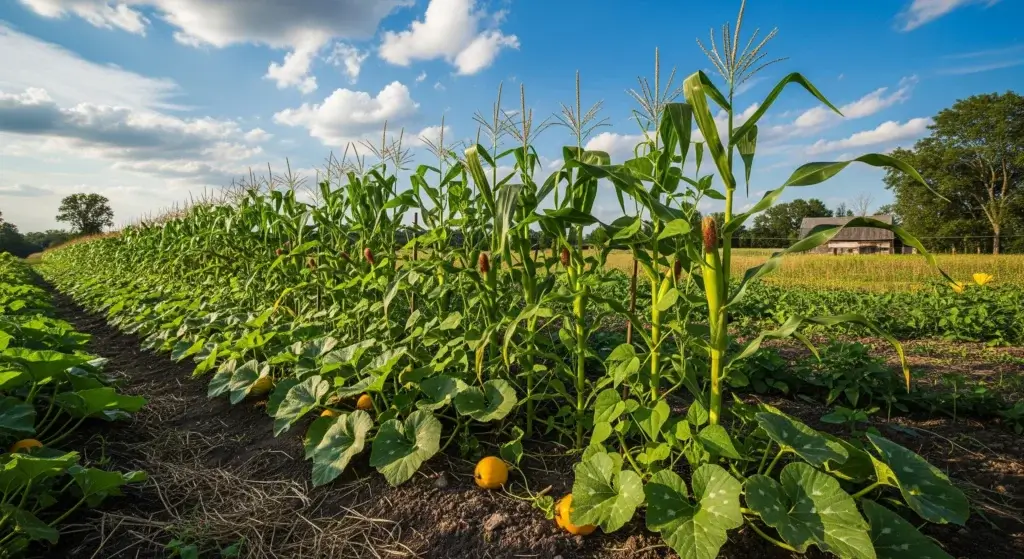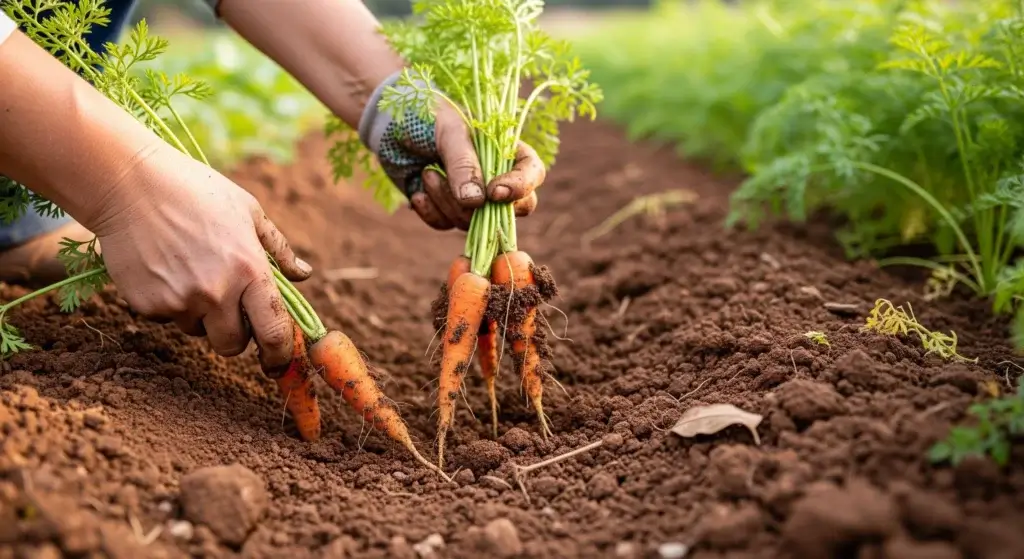
Spider plants, scientifically known as Chlorophytum comosum, are popular houseplants cherished for their variegated evergreen foliage.
They are low-maintenance and forgiving, making them an ideal choice for both beginner and experienced plant enthusiasts.
One crucial aspect of caring for spider plants is providing the right soil type.
In this article, we will explore the various soil options for spider plants, including popular choices for repotting, to help you ensure the optimal growth and health of your beloved green companion.
Understanding Spider Plant Needs
To ensure the optimal growth of spider plants, it’s essential to understand their specific needs.
These resilient plants flourish in typical household humidity levels and thrive in temperatures ranging from 60 to 80°F.
When it comes to the soil, spider plants prefer a loose, nutrient-rich potting mix.
This type of soil facilitates moisture retention while ensuring proper drainage to prevent the risk of root rot.
By meeting these fundamental requirements, you can provide an environment that supports the health and vitality of your spider plant.
- Read also: Guide to Thriving Spider Plant Care Indoors
- Read also: The Secrets of the Perfect Spider Plant Soil Mix

Popular Soil Options for Spider Plants
When it comes to the soil type for spider plants, there are several options to consider.
The ideal soil should have a neutral or slightly acidic pH level and retain moisture without becoming waterlogged. Some popular soil options for spider plants include:
Rainforest soil blend
This pre-packaged soil mix is specifically designed for spider plants.
It offers an optimal balance of water retention and porosity, creating an environment that supports healthy growth.
The blend typically includes components that mimic the natural conditions of spider plants’ native habitats.
Coconut fiber and high-quality compost mix
For those who prefer a do-it-yourself approach, a mix of coconut fibers and high-quality compost proves to be an excellent choice.
Coconut fibers enhance moisture retention, and the compost provides essential nutrients for the plants.
This DIY blend is well-suited for spider plants, fostering a nutrient-rich and well-draining environment.
Do Spider Plants Like Acidic or Alkaline Soil?
Spider plants prefer a slightly acidic to neutral soil pH, with an ideal range of 6.0 to 7.0.
A pH level outside of this range can cause issues, such as the tips of the leaves turning brown and eventually dying back.
To maintain the optimal soil pH for spider plants, you can use a pH meter or a pH test kit to check the soil’s pH level and make adjustments as needed.

What Are Some Other Factors to Consider When Choosing Soil For Spider Plants?
When selecting soil for spider plants, several crucial factors come into play.
Here’s a breakdown of key considerations:
Drainage and moisture retention
Spider plants thrive in well-draining soil that effectively retains moisture while preventing the risk of root rot.
Ensuring an optimal balance between water retention and drainage is fundamental to their health.
Soil pH
Aim for a slightly acidic to neutral soil pH, ideally within the range of 6.0 to 7.0.
Maintaining this pH range is vital for the overall well-being of spider plants, preventing issues such as leaf tip browning.
Pot type and light exposure
The choice of soil can be influenced by the type of pot and the amount of light the plant receives.
For plants in brighter conditions, a less porous potting mix is recommended.
Conversely, plants in lower light conditions benefit from a more porous mix.
Tailoring the soil to light exposure helps optimize growing conditions.
Nutrient-rich soil with organic matter
Opt for a soil mix that is nutrient-rich and contains organic matter.
Materials such as coco-coir, peat moss, or shredded leaves enhance soil fertility.
These components contribute to the overall health and vitality of spider plants.
Popular soil options
Consider pre-packaged rainforest soil blends designed for spider plants or DIY mixes that include coconut fiber and high-quality compost.
Another option is a blend containing potting soil, peat moss, and perlite.
These choices provide the necessary characteristics for a conducive growing environment.
What Soil Do You Use to Repot a Spider Plant?

When repotting a spider plant, it’s essential to select the appropriate soil mix to ensure the plant’s continued health and growth.
Optimal choices for repotting include:
Coconut fibers and high-quality compost mix
Utilizing a mix of coconut fibers and high-quality compost is a recommended option for repotting spider plants.
This combination offers the essential characteristics of water retention, porosity, and a pH level within the neutral to slightly acidic range.
These factors contribute to an environment conducive to the plant’s well-being.
Pre-packaged rainforest soil blend
Another suitable choice is a pre-packaged rainforest soil blend designed explicitly for spider plants.
These blends are formulated to provide the necessary balance of water retention and porosity, creating an optimal substrate for the plant’s growth.
These soil options cater to the specific needs of spider plants during the repotting process.
They ensure proper moisture levels, aeration, and a pH environment that supports the plant’s overall health.
When embarking on repotting, the selection of the right soil mix becomes a critical factor in promoting the continued vitality and flourishing of your spider plant.
- Read also: How to Use Soil Conditioner
- Read also: How to Make Organic Fertilizers at Home
Conclusion
The well-being of spider plants hinges on the right soil type.
By comprehending the specific soil requirements of these plants and making informed choices in your soil mix, you contribute to the thriving condition of your spider plant.
This, in turn, ensures that the plant continues to adorn your living space with its captivating and beautiful foliage.
Prioritizing the appropriate soil is a fundamental step in fostering the sustained health and aesthetic appeal of your beloved spider plant.
FAQs
Spider plants prefer a neutral or slightly acidic soil pH level, ideally between 6.0 and 7.5.
While these mixes can work, it’s important to ensure they retain enough moisture, as spider plants need soil that can hold some water without becoming waterlogged.
Repotting is necessary when the roots become very visible and the plant is pushing itself up out of the pot. This is typically done every 1-2 years.



